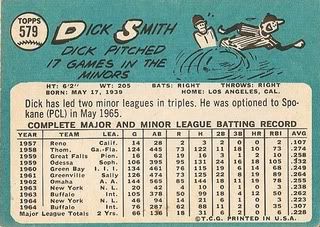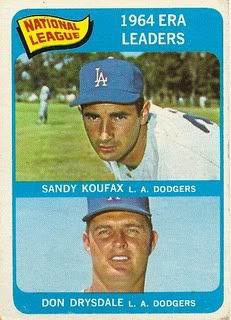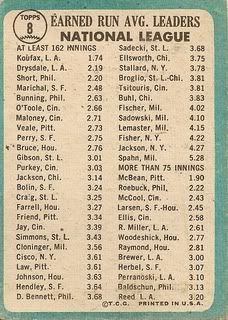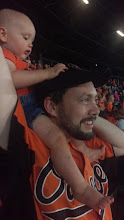
Here's the second of the troika of cards I bought with Ed's assistance at the December Philly Card Show. I'm glad to finally have a vintage card of Curt Flood, whose struggles against Major League Baseball and the reserve clause helped bring a premature end to his career. His story is one of the most fascinating in all of baseball in the 20th century.
Fun facts about Curt Flood:
-Curt was born in Houston, TX, but attended high school in Oakland, CA before signing with Cincinnati in 1956.
-The teenaged outfielder was the Carolina League MVP for the High Point-Thomasville Hi-Toms in 1956. He batted .340, slugged .567, and totaled 29 home runs in his first season as a pro.
-Flood got September glimpses of the big leagues in 1956 and 1957. He had only four plate appearances total, but hit his first home run off of the Cubs' Moe Drabowsky on
September 25, 1957.
-He became a regular starter for the Cardinals after a December 1957 trade, but didn't settle in at the plate until 1961, when his .322 average trailed only third baseman Ken Boyer (.329) for the team lead.
-The 1963 season saw Curt earn the first of seven consecutive Gold Glove awards for his sterling play in center field. He once went 223 straight games without an error, which included a mishap-free 1966 season.
-Flood was an All-Star for the first time in 1964, when he notched a .311 average and led the National League with 211 hits. He would return to the Midsummer Classic in 1966 and 1968.
-He played in all 21 World Series games for St. Louis in 1964, 1967, and 1968, struggling at the plate (.221/.287/.267 in 94 plate appearances) but nonetheless contributing to a pair of World Championship seasons and a close call in '68.
-Curt was nearly 32 when the Cardinals informed him that he'd been traded to the sad-sack Phillies after the conclusion of the 1969 campaign. He objected to the reserve clause, which owners had been using to bind a player to their team in perpetuity, or until the owners saw fit to release or trade the player. Flood insisted that he should have some power to decide where to play, and refused to go to Philadelphia. With the support of new players' union head Marvin Miller, the outfielder eventually took his case all the way to the U.S. Supreme Court, before losing in a 5-3 decision with one abstention. However, he paved the way for player free agency, which became a reality in 1976.
-After sitting out the entire 1970 season, he agreed to be traded to the Washington Senators. But some combination of age, rust, and the transition to the American League took a toll on Flood's performance. He retired after going 7-for-35 with no extra base hits for the Senators in 1971. He left behind a career average of .293 (especially impressive considering his career spanned the "second dead-ball era") with 85 home runs and 636 RBI.
-In his life outside baseball, Curt was dedicated to painting, owning small businesses, and international traveling. He worked for the Athletics as a broadcaster in 1978, and served as the commissioner of the short-lived Senior Professional Baseball Association in the late 1980s. He was diagnosed with throat cancer in 1995, and died in 1997 at age 59.








